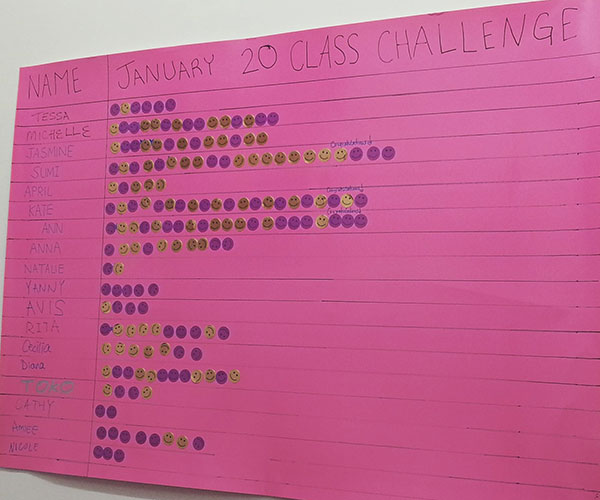重塑遊戲於教育的觀念:學與教遊戲化初探
為什麼用遊戲? 你是否曾經為了一個遊戲而廢寢忘餐?多少次因為贏了一場遊戲而狂喜尖叫?大家都記得遊戲帶來的刺激和歡樂。遊戲是大家的共同體驗,亦是我們文化的一部分。我們喜愛及享受遊戲帶來的刺激和娛樂性。假如你將遊戲帶來的那種活力、體驗和娛樂性融入到非遊戲的環境當中,如教授一節課堂,結果又會怎樣?本文旨在分享如何在學與教中結合遊戲元素,提升學生學習動機,使他們積極參與課堂活動。 什麼是遊戲化? 遊戲化是指在非遊戲的環境中使用遊戲的元素(Deterding,Khaled,Nacke & Dixon,2011)。這種方法被認為能增加使用者在非遊戲環境中的參與度和積極性。從廣義上說,遊戲化是利用遊戲元素和遊戲機制,鼓勵各人主動投入活動中,藉此促進學習或解決問題。「遊戲化」一詞,驟耳聽來,好像只是與數碼媒體行業有關的一個術語,但其實在日常生活裡,我們可能不知不覺間亦有著相同的經歷。例如,我們在超市或便利店購物,蒐集印花以換取免費禮品。這些在遊戲環境以外的遊戲元素能推動及影響人們的行為。同樣地,你可於課堂上利用這些遊戲元素,加強學生的學習。 促進學與教的遊戲化元素 多種遊戲化元素能夠促進學習與教學,其中包括:進昇機制、故事性、即時回饋、解難、社群聯繫、聲音和音樂。Stott和Neustaedter(2013)則確定在學習環境中應用以下四個遊戲元素:1)無懼失敗、2)即時回饋、3)進程和 4)故事性,能促使學生達到一定的目標,增加他們的成功感。 無懼失敗 「無懼失敗」是遊戲最顯著的特點之一。有別於學校的學習方式,遊戲沒有視失敗為一個嚴重的問題。玩遊戲時,人們可以在失敗之後重新開始。遊戲設計通常鼓勵玩家去冒險和實驗,「讓玩家有『無限復活』的機會返回先前的關卡而又不會導致無可挽回的傷害」(Stott & Neustaedter,2013)。遊戲中的「無限復活」鼓勵玩家不斷嘗試,失敗,再嘗試;同樣,在學習過程當中,犯錯也不一定是致命的打擊。這種「勇於面對失敗」的精神把重點從最終結果轉移到過程。類似的概念在當代教學法中就是進展性評估,著眼於學習過程而不是最終結果。 即時回饋 通過回饋促進學習的重要性是毋庸置疑的。即時回饋可讓學生盡快知道他們的表現及如何有效改善。在遊戲設計中,除了以獎勵或等級形式給予回饋外,亦會運用視覺提示或進度尺。這些同樣可以應用到課堂或在線學習上。例如:老師可以設立課程記分牌,顯示學生的整體表現。記分牌以視覺圖像及數字記錄學生所呈交習作及學習時的表現。透過閱讀記分牌上老師的回饋,鼓勵學生參與課堂,提高責任感。 進程 進程的含義往往能從遊戲設計中,「級別」和「任務」裡體現。最簡單但最具影響力的遊戲化機制就是採用進度尺,顯示參與者距離目標級別和任務有多遠。這鼓勵參與者積極完成任務或與其他參與者進行競爭。相同道理,老師可以利用同樣方式,使用進度尺來顯示學生的學習進程,示意他們向前望,為目標再加把勁。
 以遊戲化表現進程:記分牌顯示誰是該月「20堂挑戰賽」中的領先者。
(相片由教學中心提供,2016)
以遊戲化表現進程:記分牌顯示誰是該月「20堂挑戰賽」中的領先者。
(相片由教學中心提供,2016)
Reshaping the Perception of Games in Education: An Introduction to Gamification in Learning and Teaching
Why Games? Have you ever forgotten your meal when you were engaging in a game? How many times have you screamed when you won a game? Everyone can recall the excitement and enjoyment of games. Games are shared human experiences and they are part of our culture. We love games and enjoy the excitement and entertainment that games offer. Why not apply the dynamics, experience and engagement people display while playing a game into non-game settings, which is teaching a lesson? This article will share with you how gamification (the application of game elements) in learning and teaching can increase learners’ motivation and engagement. What is Gamification? Gamification refers to the use of game design elements in non-game context (Deterding, Khaled, Nacke & Dixon, 2011). This integration is believed to increase user engagement and motivation in non-game settings. In a broader sense, gamification is the process of using game elements and game mechanics, to engage people, motivate action, promote learning or solve problems. Gamification, though sounds a technical term related to digital media industry, it is something you have probably experienced unwittingly daily. For instant, we earn stamps by shopping at the supermarket or a convenient store in exchange of free gifts and prizes. These game elements outside a game environment could motivate and influence people’s behaviours. Similarly, you can harness these game elements in classrooms to support students’ learning. Elements of Gamification in Facilitating Learning and Teaching There are various game elements that can be used in gamification to facilitate learning and teaching, which may include: progress mechanics, storytelling, immediate feedback, problem solving, social connection, sound and music. Stott and Neustaedter (2013) identify four game elements in game design that enhance success when applied to learning environments. They are, namely: 1) freedom to fail, 2) rapid feedback, 3) progression and 4) storytelling. Freedom to Fail “Freedom to fail” is one of the most distinctive characteristics of games. Learning from games is quite different from learning in school, where failure in school is a serious issue. When playing games, people could start over again after failures. Game design usually encourages players to take risks and experiment “without causing irreversible damage by giving them multiple lives, or allowing them to start again at the most recent ‘checkpoint’” (Stott & Neustaedter, 2013). This “multiple lives” in games encourage people to try, to fail and to try again; likewise, this could happen in learning and teaching where making mistakes is not necessary fatal. This “freedom to fail” allows a shift of focus from the final results to the process. A contemporary pedagogy that shares a similar concept is the use of formative assessment which focuses on the process of learning rather than the end result. Rapid Feedback The importance of giving feedback to facilitate learning is undoubted. Giving rapid feedback means students are receiving information about how well they are performing a task and how they can improve effectively. Apart from rewards or grades, feedback could be in forms of visual cues or a progress bar in game design. Similarly, these could be applied to classroom learning or e-learning. For example, teachers could create a course scoreboard which shows the students how they are doing overall. The scores students obtained could be presented both visually and numerically with their submission of assignment and task performance. The scoreboard allows students to receive the feedback from the teacher visually. Making the rewards for accomplished tasks visible to the students can encourage participation and increase the sense of responsibility. Progression The idea of progression is often embodied by “levels” and “missions” in game design. One of the simplest but powerful gamification mechanics is the use of a progress bar which shows participants how far they have progressed or achieved in the task. By seeing their progress on a progress bar, people would be driven to take steps to complete the task or to compete with other participants. In the same way, teachers can use a progress bar to show students’ progress, signaling a forward move towards finishing a project or reaching a goal.
 Progression in Gamification: The scoreboard shows who are leading in the monthly "20-class Challenge Competition".
(Photo courtesy of CLT, 2016)
Progression in Gamification: The scoreboard shows who are leading in the monthly "20-class Challenge Competition".
(Photo courtesy of CLT, 2016)
